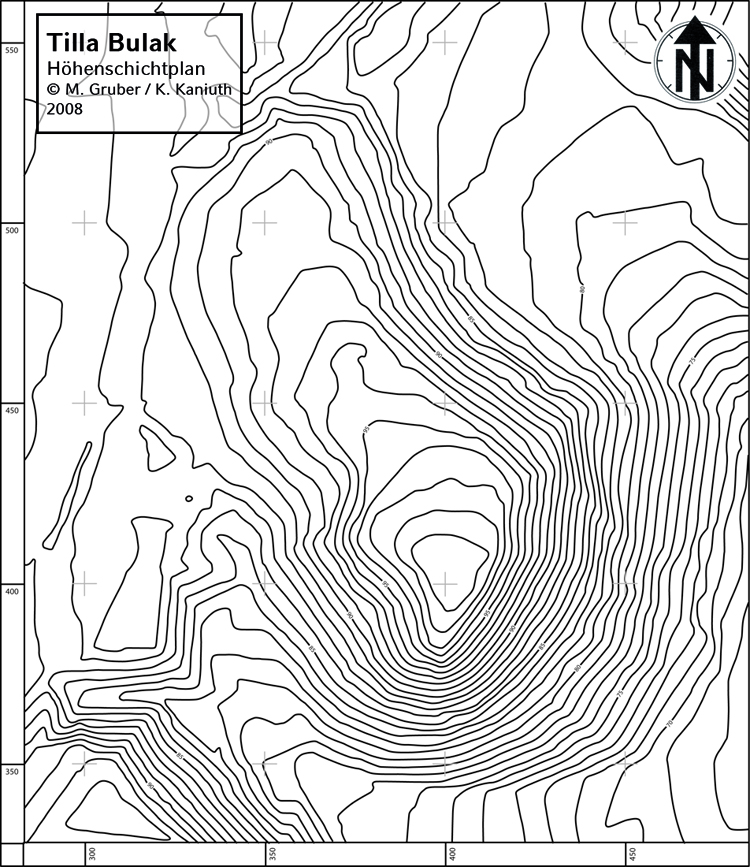
The site of Tilla Bulak (which literally means „gold spring”) is located at 66°48' E
and 37°42' N, not far from the village of Pashkurt in Surkhandarya Province, Southern Uzbekistan. The site was first explored in the late summer of 2006 by Dr. Sergej Bolelov, Moscow State Museum of Oriental Art, operating under an agreement with
the Tocharistan Expedition (headed by Academician Prof. Dr. Edvard Rtveladze).
Since 2007, a team from Ludwig Maximilians-University of Munich is working here.
The site covers approximately
Age Sapalli Culture (LB I, first quarter of the 2nd millennium B.C.), the local variant of Namazga VI in South Uzbekistan.
The Late Bronze Age population decided to settle on a natural elevation privileged through environmental conditions: The top of the hill rises 8 m above the surrounding land and offers a great view onto the plain of Pashkurt. A small pocket of low-lying ground is situated to the east, where it could easily be irrigated with waters from the “golden spring” which discharges on a year-round basis. From here, an easy trail
leads through undulating hills and over low passes onto the Surkhandarya plain, the main settlement area of the Sapalli Culture.
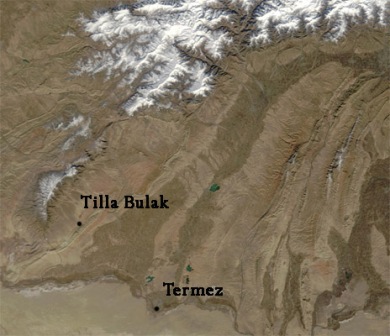
Location of Tilla Bulak
(Province Surkhandarya, Southern Uzbekistan)
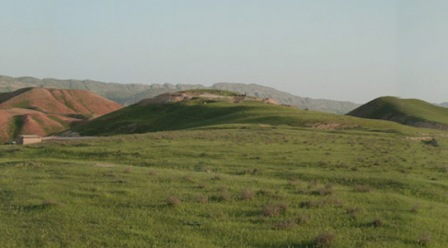
The hill from the North-northwest
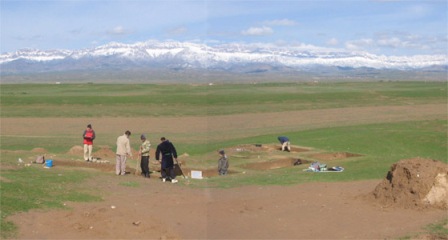
View from Tilla Bulak to the West
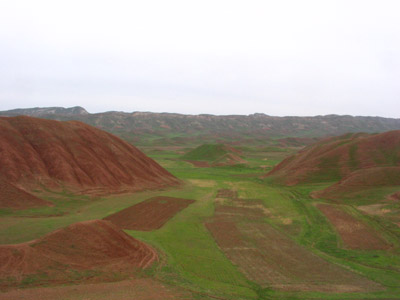
Tract of agricultural land east of
Tilla Bulak
Topographical Plan of Tilla Bulak
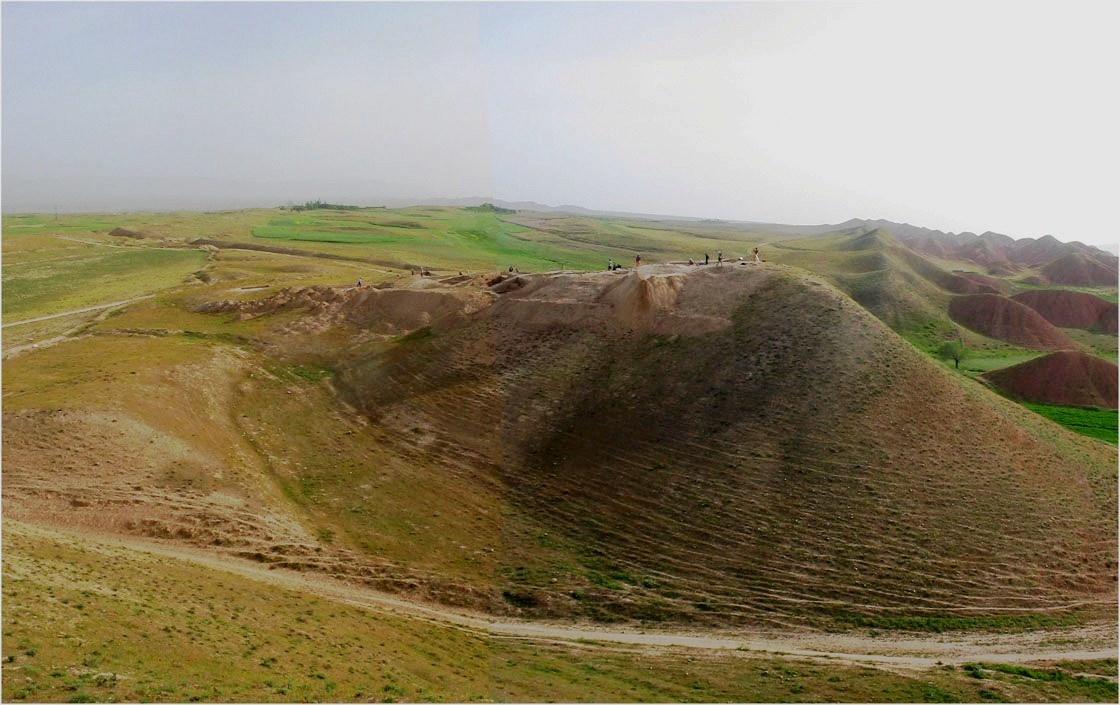
Hill from South
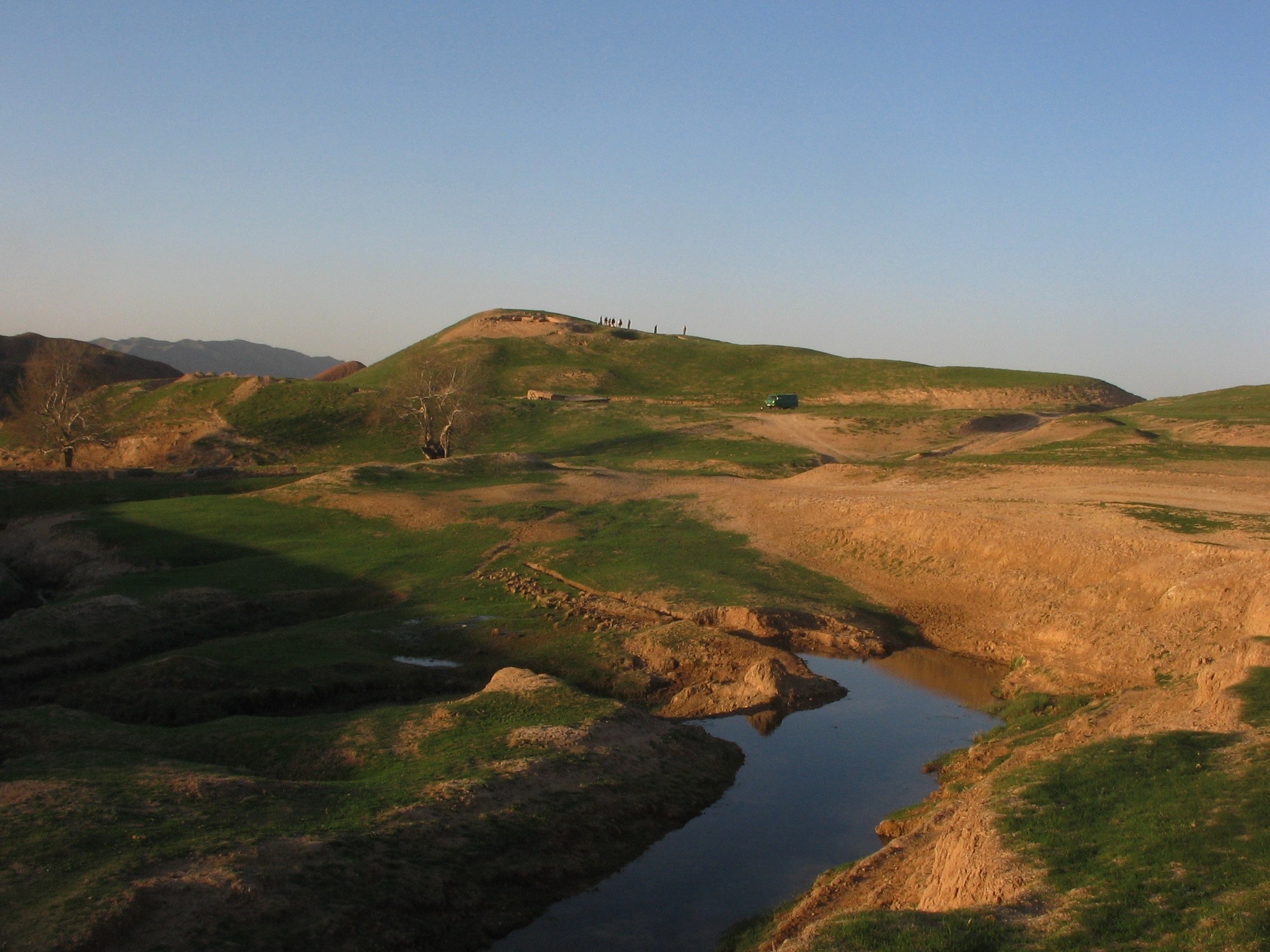
Hill from East
